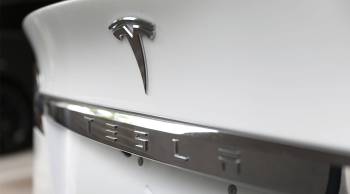
Could self-driving wheelchairs be autonomous tech’s next big thing?
Could self-driving wheelchairs be autonomous tech’s next big thing?

Elizabeth Jameson sure hopes so.
“I’m a quadriplegic which means I can’t use anything to navigate a wheelchair by myself,” said Jameson, who learned she had multiple sclerosis in her mid-30s. “I don’t have the use of hand or arms, so I can’t use a joystick to do anything with my power wheelchair.”
As companies from Uber to Ford to Tesla scramble to perfect self-driving car technology, others hope companies also set their sights elsewhere, on using that technology to create self-driving wheelchairs.
Roughly 18.2 million people, nearly half of all adults living with a physical disability, find it “difficult to or cannot walk a quarter of a mile,” according to the Centers for Disease Control and Prevention.
In a recent op-ed for Wired, Jameson said self-driving wheelchairs would provide newfound independence for people who can only “dream of mobility.” She joined Marketplace Weekend host Lizzie O’Leary to talk about her hopes for driverless technology. Below is an edited transcript of the conversation.
Lizzie O’Leary: Do you remember the moment when you thought, “Oh my gosh, maybe self-driving technology could could actually help me out” and then decided to write about it?
Elizabeth Jameson: I now use a technology where I can operate my wheelchair using my neck. I find it really hard. I’ve been reading about automated pods that deliver pizza that’s going on right now in San Francisco. And I was thinking, “Pizza? God, I would like self-driving technology to get me around.” And I was thinking, “Gee, maybe it’s a missed opportunity for people who are elderly and disabled.”
O’Leary: In the essay you wrote for Wired, you mentioned a couple of places — notably MIT and Cyberworks — that are working on self-driving wheelchairs. What are the biggest barriers that you see as a consumer, for you to get one? And for other people who might want one, to get one.
Jameson: Barriers —money. Companies need money. I just want to encourage the tech industry to not forget the growing number of people who are elderly and disabled.
O’Leary: When we have these conversations about self-driving cars, you know, we have seen some mishaps. People are worried about the technology. Does that worry you when you think about the potential for an autonomous wheelchair?
Jameson: I don’t worry about that because all these prototypes have to go through FDA approval. That means clinical trials involving safety. So I don’t worry about that. We’re talking about maybe two miles an hour at the most. I’m stuck and I would love to have the freedom to move.
O’Leary: I think people will listen to this and perhaps not understand the difference between a power wheelchair, which is what you use and what many people in America use, and what an autonomous wheelchair would provide. What, really for you, are sort of the key differences?
Jameson: A power wheelchair is battery operated and you need someone to operate it. And if you’re a quadriplegic — I can’t access it. I don’t have use of my hands. I sit in this wonderful wheelchair, but I can’t go anywhere with the wheelchair. An autonomous wheelchair means I could go places within my house and hopefully, in my dream world, I can go down the street and get a cup of coffee. If investors are willing to put money into developing other prototypes, we can hopefully limit the cost. So that we’re not buying new wheelchairs, we’re investing in new technology which will be attached to current wheelchairs. And in the future, we could go to Starbucks or the local coffee shop. But right now, I’m not looking for that. I want to go to my kitchen and see my husband at dinner.
There’s a lot happening in the world. Through it all, Marketplace is here for you.
You rely on Marketplace to break down the world’s events and tell you how it affects you in a fact-based, approachable way. We rely on your financial support to keep making that possible.
Your donation today powers the independent journalism that you rely on. For just $5/month, you can help sustain Marketplace so we can keep reporting on the things that matter to you.


















